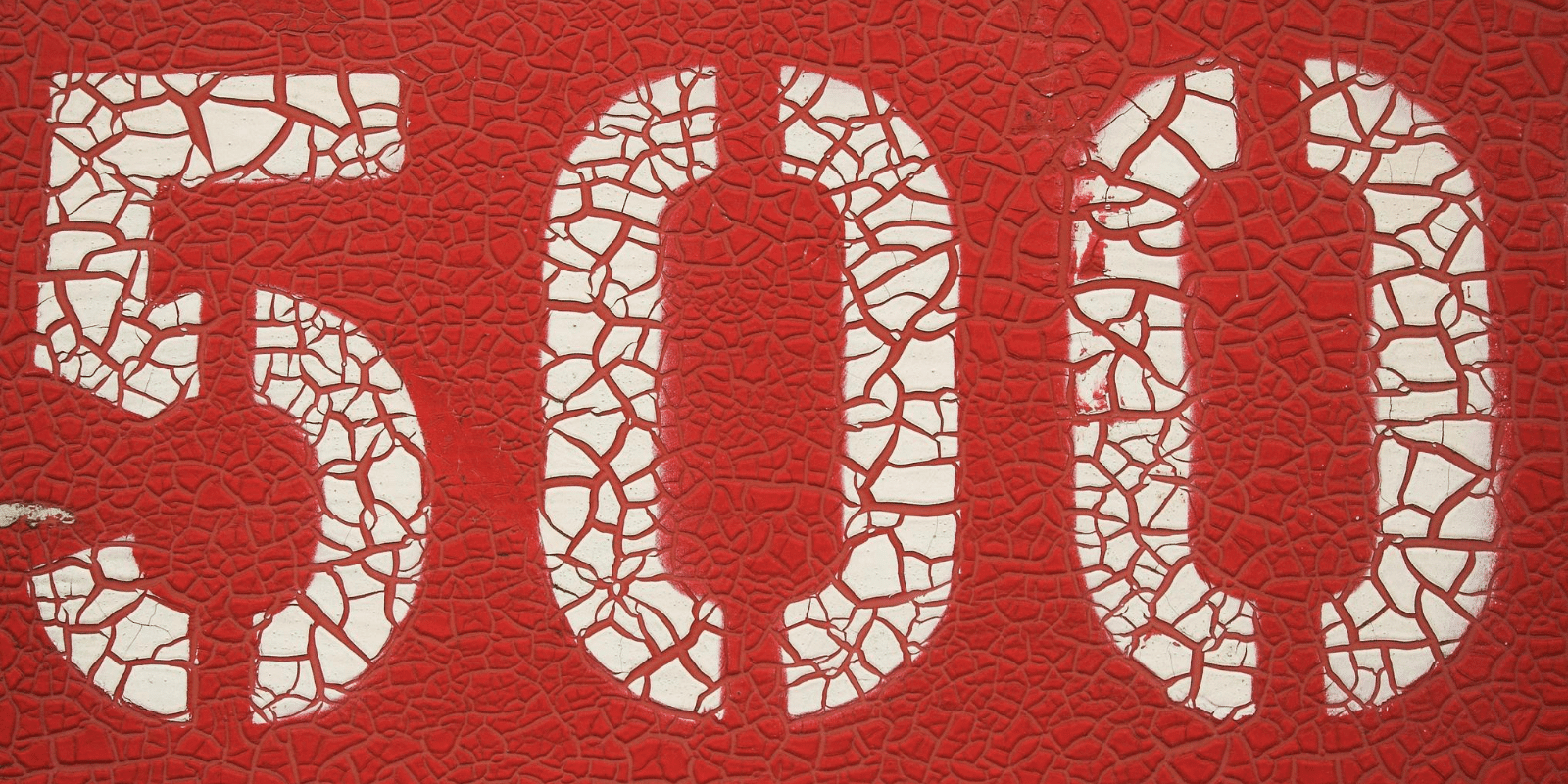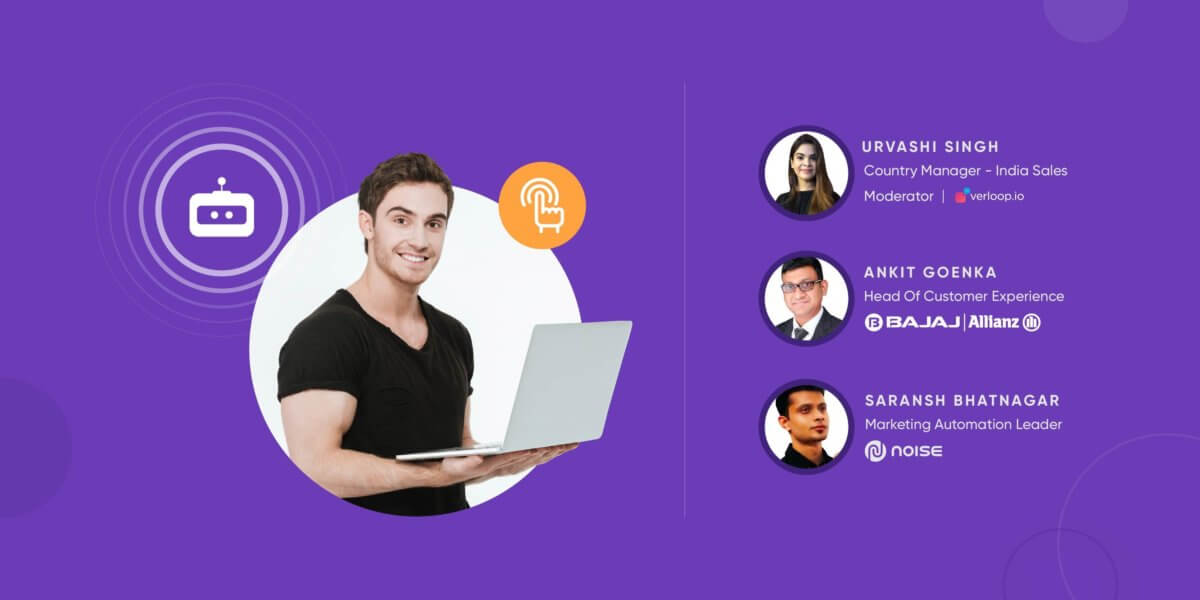The Un-CEO Series – Samuel Gier, MilkBasket’s Herald of Success

The Un-CEO Series – Samuel Gier, MilkBasket’s Herald of Success
At the CMO Asia Awards Ceremony in Mumbai, Samuel Gier, the VP-CX for the $50 million valued Milkbasket tells me how he picks apart the subtle nuances of great customer experience.
As delegates and awardees enter the lobby of the Taj, Mumbai, they’re recognized by the registration desk and invited by name. This would be immaterial to the untrained eye, but Samuel digs deeper.
“They call it a registration desk, but there’s a really personal touch to it. Hundreds of people walk in through that door. And for an employee to be able to recognize all of them by face and name, some real grind-work went into making that possible.” he points out.
“You make the first interaction of a customers day special and everything else falls into line.”
It’s this kind of attention to detail that won Samuel Gier the title of ‘50 Most Impactful Customer Service Professionals’ at the CMO Asia Awards on that day. Samuel, who’s been the VP CX of Milkbasket for nearly three years had led the company to a customer retention rate of over 95%. The recognition of his pathbreaking performance isn’t just limited to his peers. In a statement released post-MilkBaskets’ $7 million Series A funding, Vani Kola, Managing Director at Kalaari Capital validated Samuel’s efforts.
“…. an incessant focus on customer delight, backed by a large market opportunity in the grocery space culminated into us leading a $7M Series A round into Milkbasket.”
Below is the transcript of our interview with Samuel Gier. “A:” denotes the interviewer, Anush Fernandes.
A: First of all, congratulations on the award. Could you tell me more about CMO Asia?Samuel: So this was conducted by CMO Asia, a nonprofit organization that recognizes leadership talent in the field. The award was for Customer Experience professionals and I was one of the 50 awardees.
A: I think a lot of people would never have been to one of these award ceremonies. What’s the experience like?Samuel: The process begins with a shortlist. CMO Asia has board members who select candidates, and an invitation is sent to people who’ve qualified. The invitation is sent a week or two earlier than the event, so people can make travel arrangements. The whole thing happens at the Taj, Mumbai and rather embarrassingly this time it fell on Valentine’s Day.
Once you reach the venue, you get set up with one of the friendliest registration desks I’ve come across. You get ID cards, so networking becomes easier if you’re bad with names. You then go through a day of CX sessions, like overviews of the CX sector from different industry viewpoints. Telecom, E-commerce, Insurance, Retail and what have you. They talk about the impact CX has on their industries, what changes they look to bring to drive CX better and, the latent differences in B2B and B2C.
My favorite CX presentation came from Reliance Jio; it ticks most of my CX boxes. When we talk about CX, it isn’t just price or service. It’s a more holistic approach. Madhav (Malhotra), who’s the Sr. VP, Customer Services for Reliance Jio talked about how in the pre-Jio days a SIM card was really hard to come by.
You’d need to fill out a bunch of forms, submit it to the store, the store would have to process the papers and you’d have to stand in line. But when Reliance entered the market, it used customers Aadhar cards for verification and brought down application time to 30 minutes; today it’s 15 minutes. So even though Jio is known most prolifically for its customer-friendly prices, it ticks my convenience, service, and usage boxes. It’s an entire organization that’s aligned towards a great customer experience and that’s rare to see.
After the presentations, you have an informal meetup to network and trade ideas and best practices. Then we have lunch, more sessions and the day ends with the awards ceremony.
A: Could you tell me more about what Milkbasket does and about what you do as its VP CX?Samuel: MilkBasket is a hyper-local grocery delivery service and one of our key product differentiators is a “rolling-basket”. We make home deliveries every day. Customers have the flexibility to add products to their basket till midnight and all these products are then delivered to you by 7 am that morning. Our delivery rate is 99% and our customer retention has been 95%.
A: You work in CX, one of the fastest growing type of jobs in the industry. Your company, Milkbasket, is in one of the fastest growing sectors in the industry. How does this rocket-pace affect you personally?
Samuel: It keeps me on my toes. I’ve to keep up with industry trends, cross-learn through other channels, there are a lot of case studies* I go through, and other digital assets just to keep up with the pace of the sector. There are also personal challenges. CX, I would say, it’s almost a way of life for an organization. It has to be embedded into every function of the organization.
The reason it’s so fast paced is that consumers today have more information available to them, and they also govern the data they give to you. At the root of good, hassle-free, smooth CX is data collection. You use this data to make every touch point the customer has with your company fruitful.
Suggested Reading: Our Journey to CX Excellence: an Interview with… David Ward, Yodel The Customer is Everything. How DHL Freight built its CX programme – and what we can learn from it.A: Given that the company’s work happens between 12 and 7 am, what does your average day look like? How much of it is people-driven versus insight-driven?
Samuel: We aim to clear all of Milkbasket’s deliveries at 7 in the morning. So, I start my days at 5 am in the morning, and it usually ends around 1 am the next day. I try to leave by 7 or 8 pm, but that’s not really the end of my day. I have to be on call till late into the night, because if there’s an issue with delivery or logistics or inventory, it’s my job to step up to ensure there’s minimal customer experience damage.
The contents of my day depend on how my 5 am meeting goes. In case there’s an issue, the information has to go out to my team and thereafter the customers. For example, In Noida recently, there was a massive hailstorm that meant we had problems with smooth deliveries. This information had to be relayed to all our stakeholders to ensure we were on the same page.
If everything’s smooth, at about 11 am I sit with my team leaders to get updates on our progress, what customer query inflows are for the day, what’s our average response time, what time do we bring that number to zero, what’s the conversation like with the vendors.
The rest of my day is meetings with other functions of the organization. Product, Inventory, Operations, Tech. I think my day is 70% data-driven and 30% people driven. Some of my important metrics % of successful deliveries, % of refunds given, the top three VOC (voice of customer) issues for the day.
A: What do you feel are the biggest challenges to delivering an outstanding customer experience? How does Milkbasket’s exponential growth affect these challenges?
Samuel: I think one of the big challenges for any CX in an organization is the fact that it has to be top-down. I think Amazon is a great example of that. What Amazon does best is the way they utilize the data that they receive and use it to change their daily processes.
A lot of people who are sitting in leadership positions aren’t necessarily aligned with the CX way of working. The ROI on good CX is fairly slow, even if the returns are massive. You can pay Facebook or Google ‘x’ sum and you’ll see your traffic shoot up the very next day, but with CX your return comes six or twelve months down the line. It’s not as tactile other investments you can make.
In MilkBasket, my personal challenges aren’t quite as hard. (MilkBasket CEO) Anant (Goel) is very involved and the top-down culture is fairly intense. We all strive to make our customers lives easier. That, in essence, was the reason Milkbasket was created; so that our customers don’t have to run around every morning for milk or other necessities. In Milkbasket, we build everything around our customers. Other companies and heads of CX don’t necessarily have that.
We’re looking to double the number of cities we’re present in over the next year. We try to make our growth strategic, we learn from mistakes and expand carefully. Our first market was filled with millennials, people who had to get to work early in the morning or make sure their kids got to school. So where we expand into next will be based on a lot of parameters; what the demographic looks like, what our TG’s day looks like, what time the deliveries need to happen, and how we can account for that.
Payment is also a considerable challenge in India, because with our product — you pay before you receive, which is a fairly novel initiative for a lot of Indians. Educating customers about how our system works plays a big role in solving that problem.
A: Where do you think CX will be in the next 5–10 years?
Samuel: I think a lot will change, but on the flip side, a lot will stay the same. A lot of big business down the line will become more cognizant of the fact that CX’s RoI is a long term process. So these businesses will align their different company functions to CX. This change will, of course, be gradual. I think we’re looking at a culture change overhaul as well, a good example of that being the difference in the way Indian government banks work with respect to CX vs. how private banks work.
I think there will be a lot of work with regards to personalization of data. I believe there will be a more proactive approach to how and what we show to our customers. We’ll see a fundamental shift in what kind of data we’ll collect from customers too, given the new tools we use.
A: As we mentioned earlier, Vani Kola, MD at Kalaari Capital was quoted as saying “Milkbasket has an incessant focus on customer delight”. What investments have you made or do you see making to improve customer experience?
Samuel: A lot of our investments have focused heavily on technology and data analytics. Analyzing customer data using machine learning, the technology with which the customer interacts with the company, the social media presence we have, all of these are the avenues in which we’ve invested.
The extremely high recall and interaction rate that Milkbaskets customers have with us has given us a lot of actionable insight into proactive and personalized buying behaviors. We’re looking at a future where we can predict what products our customers would like to buy based on their historical buying behavior. So using our ‘rolling-basket’, customers won’t have to manually add items to their basket, we create a basket for them and they can choose if they have anything to add or remove from it. It’s a more seamless purchase experience.
I think technology will play a huge role in CX. A lot of the learning will have to happen and a lot of products will have to talk to each other. So based on individual experiences, Customer A should see what Customer A wants to see, not just what customers like Customer A wants to see. Analytics too, it’ll play a huge role in designing CX in the future.
A: MilkBasket is expanding into what many call “the Silicon Valley of India”, Bangalore. How do you adapt your CX strategy to this new customer base?
Samuel: A lot of the insights we gained through our previous experiences played into how we tackled Bangalore. Bangalore was entirely new territory for us. It was a diverse city filled with a lot of competitors, like DailyNinja, BigBasket, and DoodhWala. We tried to keep our brand identity consistent, so we brought the same drive and spirit for logistics, even though the products were a bit different owing to geographical differences.
By virtue of our rolling-basket, we’re the only player in the market to provide such flexibility to our customers. Order at 12, get by 7. Everyday. It’s simple and effective.
A: Unlike the Big Bazaar’s and Walmart’s of the world, where company-customer interaction is only 2 or 3 times a month, customer frequency with Milkbasket is 25 times a month. What does that mean for you and your team?
Samuel: Given the frequency that our customers buy from us is extremely high, the recall rate is also quite high. In case there’s an error from our side, customers are understandably upset. So the Walmart’s and Big Bazaar’s can only mess up once or twice a month, and even then because of the low recall rate, all is forgiven. But with MilkBasket, our customers wake up to our app every morning, they see our bags on their doorstep every day. And given this extremely high recall rate, the backlash we’d face for our failures is quite high.
A: Do you have any peers or idols that you look up to, or are glad you’re associated with?
Samuel: As a peer, there’s a guy called Ashish Sarin who’s the General Manager Operations at Reliance Jio whom I’m really glad to be associated with. I drop him a text if I have any challenges at work related to CX and he’s always there. An idol of mine would probably be Jeff Bezos, just in terms of how he’s designed the entire Amazon journey to fit customer experience.
A: Finally, what is the best advice you’ve gotten, and what is the best advice you can give?
Samuel: The best advice I’ve gotten is from Anant, it’s “never overpromise always overdeliver”. That’s really important to me from an expectation setting standpoint.
The other one I always keep handy is from Sam Walton — “There is only one boss. The customer. And he can fire everybody in the company from the chairman on down, simply by spending his money somewhere else.”
The best advice I can give is from what I’ve learned about CX as it stands.
“A lot of CX is people-driven. It’s stakeholder management to see that everyone is aligned with a vision. That vision doesn’t have to be yours, it could be the company’s vision. You have to build the internal customer experience to get outstanding results. Once everyone’s on the same page and everybody has a great time working with each other, then you’ll see results.”
Related: Checkout Our Podcasts!






